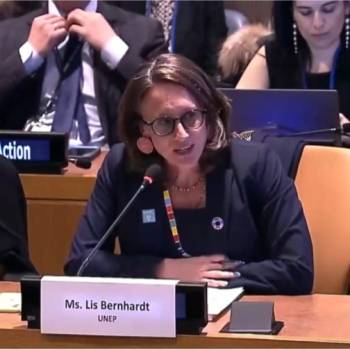
The new EU Soil strategy offers a policy framework to achieve good soil health in Europe by 2050. To reach this goal, there is a strong need to ensure an effective legal framework for soils coherent with other key EU policies such as the proposal for a nature restoration law, the Common Agricultural Policy (CAP), and the Land Use Land Use Change and Forestry (LULUCF) regulation.
The Soil strategy published in November 2021 announced a proposal for a new EU Soil Health Law, emphasising the key role of existing and upcoming policy instruments, and setting up an EU framework for soil monitoring. In May, IEEP responded to the public consultation on the strategy and has worked on soil policy in the EU in various studies and EU research projects, and the EU Mission Assembly ‘Soil Health and Food’.
Through their fundamental role in supporting ecosystem functioning and the delivery of key ecosystem services, well-managed soils can contribute to addressing the intertwined biodiversity and climate crises, while contributing to food security, a sustainable economy, and human health. The Strategy highlights soil’s role as a solution to these big societal challenges and provides a strong vision for a more coherent approach to tackling soil degradation across the relevant policy areas.
To reach healthy soils by 2050, it is crucial that the EU adopts a coherent legal framework to protect and restore soils. The proposed Nature Restoration Law will set targets to help restore ecosystems by 2050, including soils. However, a legal framework for soils is needed to support soil restoration targets as soil degradation is a transboundary issue. The Commission has committed to publishing a legislative proposal on soils by 2023 which could, in principle, come into force in 2024 or 2025. However, since soil restoration is a long process that should not be delayed, ensuring existing initiatives deliver for soils will be central alongside the new law.
Proposal for a new EU Soil Health Law
The lack of a dedicated EU legislative framework for soils has been widely recognised as a “major cause for the alarming state of our soils”. This Soil Health Law, if adopted, would give soil protection the same legal underpinning as air, water, and the marine environment have had for some time.
The EU Soil Health Law would provide a legally-binding framework for harmonised soil target setting, monitoring, and reporting. Crucially, the Commission will propose a set of common and binding indicators to measure progress towards soil health at the EU level, which will be developed by the new enlarged Expert Group on Soil Protection.
The Commission will assess the need and potential for legally-binding provisions for:
- A ‘passport for excavated soil’ (to ensure safe transport, treatment or reuse elsewhere);
- A definition of net land take and monitoring and reporting options;
- The identification, registration, and remediation of contaminated sites;
- Monitoring soil and soil biodiversity and reporting on their condition, building on existing national and EU schemes including the EU Soil Observatory, the LUCAS soil module, and the Land Information System for Europe;
- Achieving the Farm to Fork strategy target to reduce nutrient losses by at least 50%.
This is the second time the Commission has tried to create an EU legal framework for soils. In 2006, the Commission’s proposal for a European Soil Framework Directive was blocked by the UK, Germany, France, the Netherlands, and Austria and was formally withdrawn in 2014.
The political landscape has changed since then, and it seems that some formerly opposed Member States now support this initiative. However, the Commission will face some challenges in devising a proposal that Member States will accept. It will need to respect the subsidiarity principle, and address concerns about the geographical differences in soil threats and characteristics. Appropriate soil management is highly location-specific, and solutions must be adaptable to local conditions.
Proposal for legally binding nature restoration targets and soil health
The Commission is expected to propose legally- binding nature restoration targets on 23 March. According to the soil strategy, the Commission will “consider” proposing legally-binding targets to “limit” the drainage of peatlands to protect organic soils, and “possibly consider” measures that deliver for soil health, by increasing soil organic carbon. Strong legally binding targets on soil restoration in the nature restoration law proposal would give teeth to the soil strategy and be welcome.
The need for restoration is urgent considering that around 60% to 70% of EU soils are not healthy. Soils are home to around 25% of the world’s biodiversity and are fundamental to terrestrial nature restoration. In climate terms, better soil management can increase the carbon storage capacity of soils, which are the largest terrestrial carbon pool, and enhance soil ecosystem services that contribute to climate adaptation, including food security and hazard risk mitigation.
The restoration of peatlands, wetland ecosystems containing carbon-rich peat soils, is widely recognised as one of the most effective nature-based solutions for climate and is coherent with other policy objectives, creating win-wins for biodiversity and disaster risk mitigation. Progress to date has been slow, underlining the need for now introducing a binding legal obligation.
Soil organic carbon plays a crucial role in essential soil functions including carbon storage, biodiversity, soil fertility, and water storage, yet around 45% of EU soils have low SOC levels. Promoting management measures to increase soil organic carbon, such as agroforestry and conservation agriculture, is urgent, and the restoration law presents a unique opportunity to do so.
One of the Commission’s proposals for increasing soil carbon is for the EU to join the international 4 per 1000 initiative. Although this is a step in the right direction and increasing SOC by 0.4% annually is a good aspirational goal, studies reveal it is not always technically feasible across all EU regions. The nature restoration law and the Soil Health Law could set more context-specific and achievable targets for soil organic carbon.
Common Agricultural Policy (CAP) and soil health
Practices in the agriculture and forestry sectors are key drivers of soil degradation. More sustainable soil management practices in both sectors can be supported under the CAP and the Strategy calls for Member States to ensure that Member State CAP strategic plans, now in the process of being agreed with the Commission, contain interventions that address soil protection effectively. In evaluating the plans, the Commission should take the opportunity to ensure that this occurs. Needs vary, as shown in an IEEP assessment of the major environmental needs in four Member States to inform the strategic planning process. The assessment also proposes measures to address the identified needs, including for soil protection. Funding peatland rewetting and alternative uses to conventional agriculture, such as paludiculture could make a significant contribution.
Importantly, the new CAP should also play a role in protecting organic soils through its new conditionality standard (GAEC 2) which covers wetland and peatland protection. However, its impact will depend on how Member States choose to apply it as the legal text of GAEC 2 was weakened in the final decision on the CAP regulation.
LULUCF Regulation and soil health
In the context of LULUCF, the primary goal of soils is retention and accumulation of soil carbon, as they act as GHG-emissions sinks. Therefore, the LULUCF Regulation and the future legal framework protecting soils will have to work together, as they can both benefit each other. Healthy soils are essential for effective carbon sequestration, and a global legislative framework will work towards that goal. The LULUCF Regulation is currently being revised with the objective to merge, as of 2030, the LULUCF sector with the non-CO2 agricultural sector in a new climate pillar. The new regulation will have to ensure coherence with the new legislative framework for soils. Some measures, including improving monitoring and accounting systems and setting explicit targets, such as for agricultural soils to be a net carbon sink, can help build a strong and consistent policy framework for soils.
Carbon farming and carbon certificates
The EU carbon farming initiative and legislative proposal for carbon removal certification are crucial to establishing an economic incentive for farmers and land managers to reduce emissions and increase the carbon sink. The Commission hopes that its proposals will “rapidly kick start carbon farming in the short-term, and then upscale it across the EU”. IEEP has contributed to guidance on results-based carbon farming which can potentially support soil friendly management e.g. paludiculture on rewetted peat and agroforestry. However, carbon benefits vary greatly across contexts, and improved tools and needed for measuring impacts. Widening the focus to win-win benefits for nature and ecosystem services beyond carbon could increase uptake and incentives.
Enabling factors for the Soil Strategy
Other policies are highlighted in the Strategy and will also play an important role in ensuring that soil protection is coherently addressed in the EU. These include the Forest Strategy, the Zero Pollution Action Plan, the Water Framework Directive, the Circular Economy Action Plan, and urban planning policies.
An effective governance framework with well-defined, precise objectives linked to progress indicators is needed and needs to be refined as our knowledge base on soils grows. Further research to fill key knowledge gaps, including those regarding contaminants and soil biodiversity, is crucial in this context. The new Horizon Europe Mission for Soil Health and Food will contribute to this. IEEP has provided policy recommendations to the mission.
Stakeholders such as Copa-Cogeca question what a Soil Health Law will add to the already existing set of tools, and fear that land managers will receive only a new administrative layer. The Commission is counting on convening ‘all stakeholders around the table to discuss and collaborate’, in a new EU Coalition4HealthySoils. This is envisaged as an enlarged EU expert group, supported by the EU agencies and the Horizon Soil Mission, and interacting with other EU and global networks.
Finally, raising awareness on the urgent need to protect soils will also be important to ensure widespread support for the measures needed to achieve healthy soils from the landowners and managers responsible for implementing them, and from society at large.
Sources
IEEP -
Posted on 2022-02-10 11:10








Comments